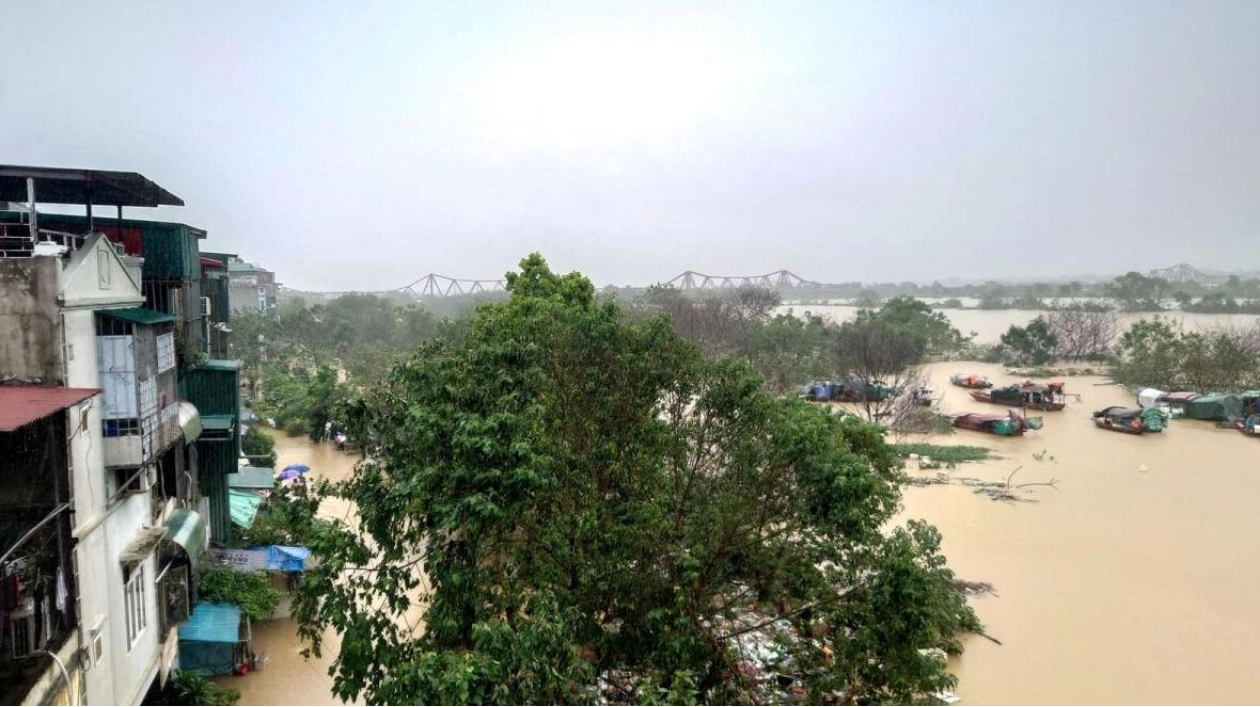Hanoi, the capital of Vietnam, evacuated thousands of residents living near the swollen Red River as water levels reached a 20-year high, flooding streets just days after Typhoon Yagi devastated the northern part of the country, resulting in at least 179 fatalities.
Asia's most powerful typhoon this year, Yagi, brought strong winds and heavy rains as it moved westward following its landfall on Saturday. This caused the collapse of a bridge and wreaked havoc across provinces along the Red River, the region's largest river.
"My home is now part of the river," said Nguyen Van Hung, a 56-year-old resident living in a neighborhood along the Red River's banks. The typhoon, along with subsequent landslides and floods, has claimed 179 lives and left 145 missing, according to government estimates.
Vietnam's state-run power utility, EVN, announced on Wednesday that it had cut off power to some flooded areas in the capital due to safety concerns. Mai Van Khiem, director of the National Center for Hydro-Meteorological Forecasting, stated that the Red River was at its highest level in two decades and that more rain was expected over the next two days.
Some schools in Hanoi have advised students to stay home for the remainder of the week, while thousands of residents in low-lying areas have been evacuated, according to government and state media reports. Closer to the city center, the charity Blue Dragon Children's Foundation evacuated its office on Tuesday after authorities issued flood warnings.
EVN also announced on Wednesday that it had halted the discharge of water from the Hoa Binh hydropower dam, the second largest in northern Vietnam, into the Red River tributary, the Da River, to mitigate water flow. Vietnamese authorities have also expressed concerns about Chinese hydropower plants releasing water into another Red River tributary, the Lo River, known in China as Panlongjiang, with Beijing stating that the two countries are cooperating on flood prevention measures.
The typhoon caused significant damage to numerous factories and flooded warehouses in coastal export-oriented industrial hubs east of Hanoi, forcing closures. Some factories are not expected to resume full operations for weeks, according to executives. This disruption poses a threat to global supply chains, as Vietnam hosts large operations of multinational companies that primarily ship to the United States, Europe, and other developed nations.
In provinces north of the capital, landslides triggered by heavy floods claimed dozens of lives. "My house's first floor is completely underwater," said Nguyen Duc Tam, a 40-year-old resident of Thai Nguyen, a city approximately 60km from Hanoi. "Now we have no fresh water and electricity," he added. Another resident, Hoang Hai Luan, 30, said he had not experienced such severe flooding in over 20 years in the area. "My belongings and possibly those of many others are completely lost."
Among the factories located on the outskirts of the city, which has a population of about 400,000, is a large facility for Samsung Electronics, which ships about half of its smartphones worldwide from Vietnam. There were no signs of flooding at the facility on Wednesday, according to a Reuters witness.






